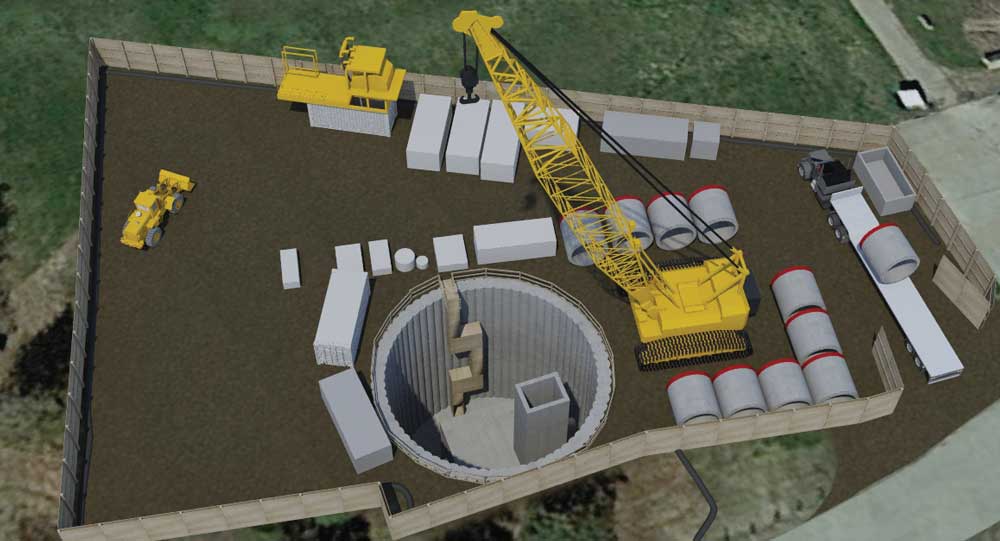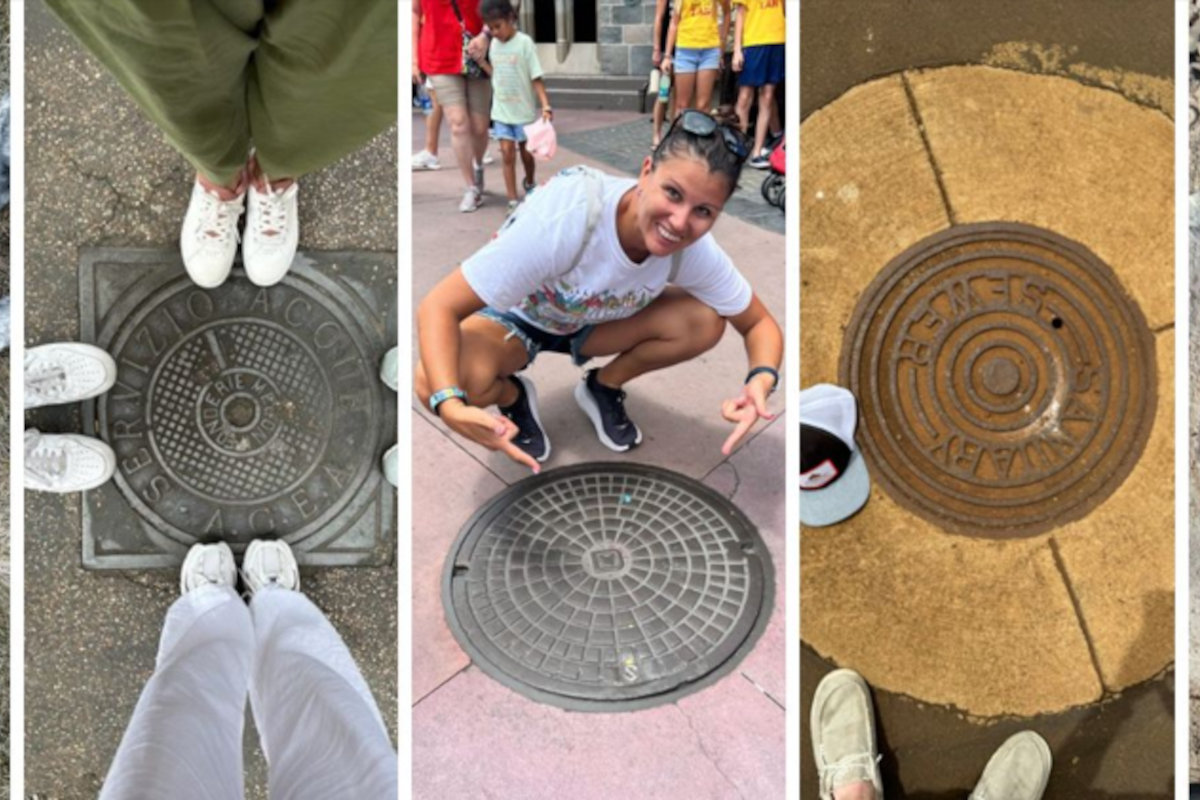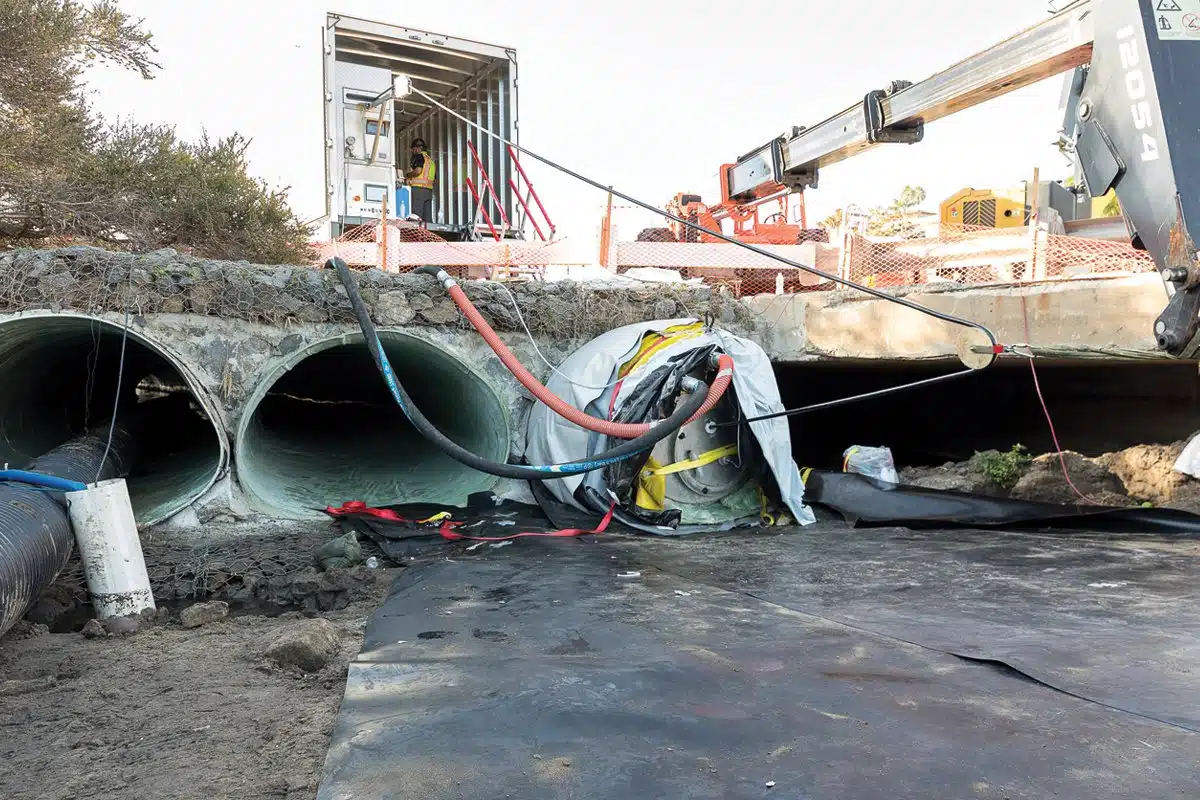
2021 Project of the Year New Installation Runner Up: YDSS Force Main Twinning Project
The 2021 Trenchless Technology Project of the Year for New Installation Runner Up is the YDSS Force Main Twinning Project that took place in the Town of Newmarket, Ontario for the Regional Municipality of York.
The Region retained GHD and Black & Veatch to develop a sustainable and innovative solution in providing a new force main (FM) from the Newmarket and Bogart Pump Stations. This new FM was constructed across environmentally sensitive lands, parklands and highly urbanized areas of Newmarket. The new FM would be required to connect three regional pump stations (Newmarket, Bogart and Aurora).

The goal for the project was to fulfill the servicing requirements for the community of Newmarket while minimizing the impacts to the built and natural environments. Following rigorous analysis, detailed design, peer review and expert panel input, the project team concluded microtunneling with long curved drives would be highly advantageous to assist in minimizing impacts, as well as provide the most technically feasible and cost-effective solution. The challenges associated with the design and construction of the tunnel for the new FM included traversing approximately 5.2 km of Newmarket, crossing rivers, roads, railways, navigating adjacent to high rises and residential properties, under critical infrastructure, abandoned historic features, working in parklands and under and through Bailey Ecological Park. These challenges were further compounded by working within a limited footprint regulated by flood plain, protecting and preserving habitat for species at risk, and ensuring rehabilitation for all lands disturbed by construction. The geotechnical baseline values were provided within the contract document and determined from the parameters measured during the site investigations. The contractor was advised all soil had been formed by glacial deposits with the high potential for cobbles. Furthermore, the majority of the tunnel alignment had to be constructed through pressurized ground aquifer. Given the highly variable ground conditions, high water table, soil densities, requirement to protect nearby infrastructure/environment and hardness of the soil, it was determined microtunneling was not only possible but, could be highly effective. As such, the final design included for a two-pass microtunnel with interior 1,050-mm force main.

Why Project Is Outstanding
When Ward and Burke first looked at the project from a microtunneling aspect, the main force main alignment already had some fairly long tunneling drives, but here were two shafts along the original design alignment that were located in difficult to build locations. Those two shaft locations added potential unneeded risk to the project. The team proposed to eliminate the two locations by extending the microtunnel drive lengths. By eliminating those two shafts, the team ended up having two record-setting distance drives, in terms of length, in Canada. One was 950 m long and the other being 1,132 m long. The changes proposed by the contractor included the reduction of the tunnel diameter from the minimum 2.25 m to 1.8 m. This change was intended to lessen the risk of hitting a large obstacle encountered during tunneling. While it was considered that a large tunnel diameter would be better suited to engulf and break down large boulders, it was confirmed that the well armored tunneling equipment would include the same cutting tools and jacking frame as the larger tunneling machines. Furthermore, the smaller tunnel diameter would be less likely to encounter boulders due to the smaller face cross-section. The tunnel precast concrete section wall thickness would be equal to the large diameter precast units. This suggested alteration requires a significant re-evaluation of several aspects of the design. During the consideration process, the team needed to evaluate 1) The FM pipe material and connections, 2) The amount of spoil to be removed from the tunnel alignment, 3) The annular space within the tunnel to construct the new FM 4) FM joint details and 5) Annular space for grout between the FM and precast tunnel sections as well as the contact grout between the precast tunnel sections and the ground. The contractor also proposed to use a stronger precast carrier pipe segments for the FM than was originally specified in the design at no additional cost. The benefit in doing so was to improve the rate of installation by pushing the pipe segments positioned on rollers into the long-curved tunnel. The additional pipe strength was to offset the alternate installation practice and eliminating the use of a pipe carrier to place each pipe segment within the tunnel. Once the FM pipe was installed within the tunnel, the joints would be welded together, and pressure tested prior commissioning. Both of these changes were highly innovative.
RELATED: Newmarket Microtunnelling – Twinning Project Will Improve Regional System’s Resiliency

Project Owner: Regional Municipality of York
Engineer: GHD Ltd
Contractor: Ward and Burke
Value of Trenchless Project (US$): $80 million
Sharon M. Bueno is managing editor of Trenchless Technology.




